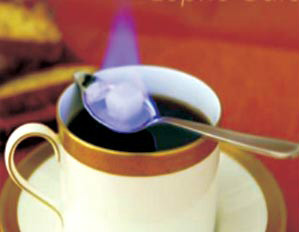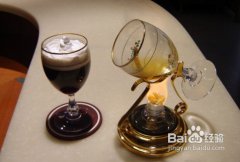A brief introduction to the Market Price of Fine Coffee Bean varieties in Santa Barara Manor, Honduras

So there are two kinds of very good quality coffee produced in Honduras, one is the "Highland Coffee" grown at an altitude of 1000 to 1500 meters, and the other is the "selected Highland Coffee", which represents the highest level in Honduras, growing at an altitude of 1500 to 2000 meters. Most of them are exported to the United States and Germany.
Although there are no distinct characteristics of Honduran coffee, its biggest feature is its rich and balanced taste as a whole. In detail, it has a medium or shallow acidity, which is obvious but not strong. Sometimes with a slight floral or fruity aroma (generally speaking, different producing areas, different elevations of beans have different flavor performance) slightly bitter and obvious sweet. The overall taste of Honduras is balanced, sour and bitter are not strong, and the balance between the two is better. Therefore, the extremely balanced nature of Honduran coffee makes it widely used. It can not only be used to mix coffee, but also can be brewed as a single product. Honduran coffee can be mixed with Italian concentrate, which will show a commendable flavor.
From its independence in 1821 to 1978, Honduras has had 139 coups, making it one of the countries with the most frequent coups in Latin America. Ramon Villeda Morales of the Liberal Party won the 1957 general election as president. Oswaldo Lopez Arellano, commander of the armed forces, launched a coup instigated by the United States in 1963, overthrew the Morales regime, and was elected president in 1965. Ramon Ernesto Cruise of the Kuomintang won the election in 1971, but soon after taking office, Arellano staged another coup. In 1975 Juan Alberto Melgar Castro, commander of the armed forces, staged a coup to replace Arellano. In 1978, Policarpo PasGarcia, commander of the armed forces, launched a coup and formed a military council headed by him. The flag of Honduras was launched on January 18, 1949. The flag was rectangular, with a ratio of length to width of 2:1. From top to bottom, the flag consists of three parallel rectangles: blue, white and blue. There are five blue five-pointed stars in the middle of the white rectangle. The color of the national flag comes from the color of the original Central American federal flag. The upper and lower blue wide stripes symbolize the Pacific Ocean and the Caribbean respectively; white symbolizes the pursuit of peace; and the five five-pointed stars were added in 1866, expressing the desire of the five countries that make up the Central American Federation to unite again.
Honduran coffee comes from El Salvador. At first coffee production was in a state of unavoidable heat until the frost in Brazil in 1975. At that time, Brazil was badly hit and coffee production plummeted, while Honduras took the opportunity to "take the top". Coffee production soared from 500000 bags to 1.8 million bags and was ransacked. It was only after that that coffee production in Honduras really developed. Honduras now ranks second in coffee exports in China and the United States (second only to Guatemala), and coffee is mainly exported to the United States and Germany.
What is there to miss about coffee in this turbulent country? Honduran coffee does not have very distinctive characteristics. Its biggest feature is that the overall taste is rich and well-balanced.
Medium or shallow acidity, giving the impression of obvious but not strong. Sometimes it has a beautiful floral or fruity aroma (generally speaking, beans produced in different regions and at different elevations have different performances). It is not at all associated with the unrest of the country. Bitterness and obvious sweetness. The overall taste of Honduran coffee is balanced, sour and bitter are not so strong, and there is a good balance between the two.
The extremely balanced nature of Honduran coffee makes it a wide range of uses. Can be used to mix coffee, can also be used as a single product to brew, mixed with Honduran coffee Italian concentrate will have a surprising effect. Although in troubled times, coffee can also grow its own wonderful, it is not difficult to understand why so many people are so obsessed with this black liquid, to some extent, this is not a simple love or habit, coffee is a mood or rely on it. I hope this country will show its vitality and splendor as coffee as soon as possible. Tumultuous Honduras will have a future as bright as Honduran coffee.
Honduras is a mountainous country in Central and North America, with a population of more than 8.3 million and an area of about 112000 square kilometers. Located in the north of Central America. It is bordered by the Caribbean Sea to the north, the Gulf of Fonseca in the Pacific Ocean to the south, Nicaragua and El Salvador to the east and south, and Guatemala to the west. More than 3/4 of the territory are mountains and plateaus. Mountains extend from west to east, inland for lava plateaus, multi-mountain valleys, coastal plains. Tropical climate, coastal plain belongs to tropical rain forest climate.
Honduras declared its independence on September 15, 1821, but was incorporated into the first Mexican Empire in 1822. He joined the Central American Union in 1823 and withdrew from the Central American Union in October 1838 to establish a republic. In 1840, with the support of Guatemalan dictator Rafael Carrera, conservative Francisco Ferreira established a dictatorship. After 1853, liberals and conservatives in Honduras often had coups and civil wars, and the regime changed frequently. The gold and silver mining industry has been damaged, which has greatly affected the economic development. Since the 1840s, Britain has occupied eastern Honduras and the Baya Islands, built railways and obtained the concession of large tracts of land. Honduras has a tropical climate and the coastal plains have a tropical rain forest climate. The annual average temperature is 23 ℃; the rainfall is abundant, and the annual precipitation in the northern coastal zone and mountain windward slope is as high as 3000 mm. There will be "fish rain" in some areas from May to July, because tornadoes form on part of the sea surface of Honduras from May to July. Tornadoes roll the fish in the sea to the sky and throw it into some areas, which becomes fish rain.
Its Honduran coffee comes from El Salvador. Coffee production was lukewarm at first until the frost in Brazil in 1975. At that time, Brazil was badly hit and coffee production plummeted, while Honduras took the opportunity to "take the top". Coffee production soared from 500000 bags to 1.8 million bags and was ransacked. It was only after that that coffee production in Honduras really developed.
For coffee production, the geographical conditions of Honduras are no less than those of its neighboring coffee-producing countries such as Guatemala and Nicaragua. There are 280000 hectares of coffee plantations in Honduras, mainly small coffee plantations, most of which are less than 3.5ha. These coffee plantations account for 60% of the total coffee production in Honduras.
In the coffee garden, because the planting area belongs to the mountain area, people pick coffee beans by hand, and then process them carefully in order to produce better quality coffee beans. Honduras collects 3 million bags of coffee every year and provides you with multi-quality coffee. It has become one of the top ten coffee exporters in the world.
In Honduras, coffee-producing areas are divided into six major areas, spread to the west and south, namely Santa Barbara (Santa Barbara), El Paraiso (El Paraiso), Copan (Copan), La Paz (La Paz) and Comayagua (Olan Mound), with an average planting height of more than 1100 meters above sea level. Coffee varieties are Arabica, 69% are HG "High and low Coffee", 12% are SHG "Special Highland Coffee" and 19% are CS. There are mainly Typic, Bourbon, Caturra, Villa Sarch and Lempira.
Important Notice :
前街咖啡 FrontStreet Coffee has moved to new addredd:
FrontStreet Coffee Address: 315,Donghua East Road,GuangZhou
Tel:020 38364473
- Prev

A brief introduction to the History and Culture of the Origin and Development of Fine Coffee beans in Santa Barara Manor, Honduras
The coffee variety is Arabica, 69% is HG high and low coffee, 12% is SHG special highland coffee, and 19% is CS. This quality is mainly demonstrated by Typic, Bourbon, Caturra, Villa Sarch and Lempira, because the granules of Honduran coffee beans are large in shape, uniform in size, uniform in color and glossy. For the convenience of harvesting, farmers will
- Next

Unique aroma of boutique coffee beans in Santa Barara Manor, Honduras, geographical location and climate
At first coffee production was in a state of unavoidable heat until the frost in Brazil in 1975. At that time, Brazil was hard hit and coffee production plummeted, while Honduras took the opportunity to take advantage of the surge in coffee production from 500000 bags to 1.8 million bags and was ransacked. It was only after that that coffee production in Honduras really developed. Honduras now ranks second in coffee exports between China and the United States (only
Related
- Does Rose Summer choose Blue, Green or Red? Detailed explanation of Rose Summer Coffee plots and Classification in Panamanian Jade Manor
- What is the difference between the origin, producing area, processing plant, cooperative and manor of coffee beans?
- How fine does the espresso powder fit? how to grind the espresso?
- Sca coffee roasting degree color card coffee roasting degree 8 roasting color values what do you mean?
- The practice of lattes: how to make lattes at home
- Introduction to Indonesian Fine Coffee beans-- Java Coffee producing area of Indonesian Arabica Coffee
- How much will the flavor of light and medium roasted rose summer be expressed? What baking level is rose summer suitable for?
- Introduction to the characteristics of washing, sun-drying or wet-planing coffee commonly used in Mantenin, Indonesia
- Price characteristics of Arabica Coffee Bean Starbucks introduction to Manning Coffee Bean Taste producing area Variety Manor
- What is the authentic Yega flavor? What are the flavor characteristics of the really excellent Yejasuffi coffee beans?

